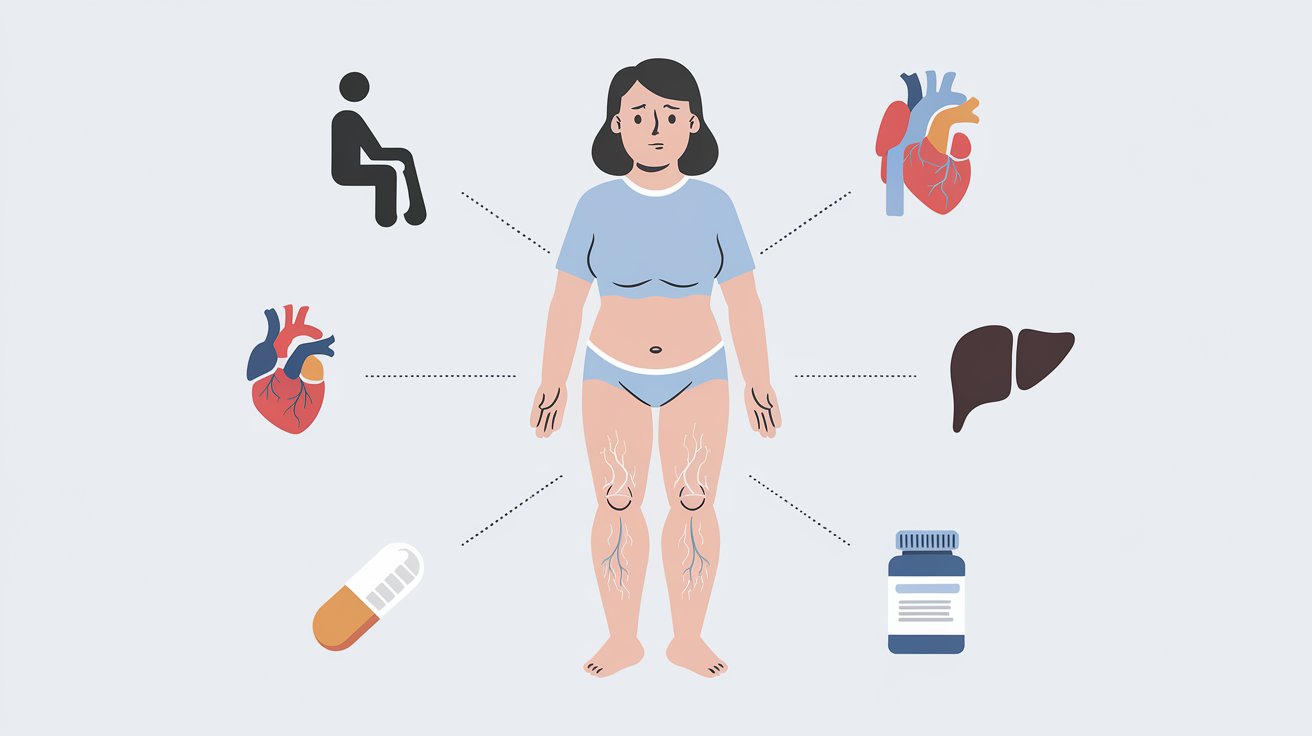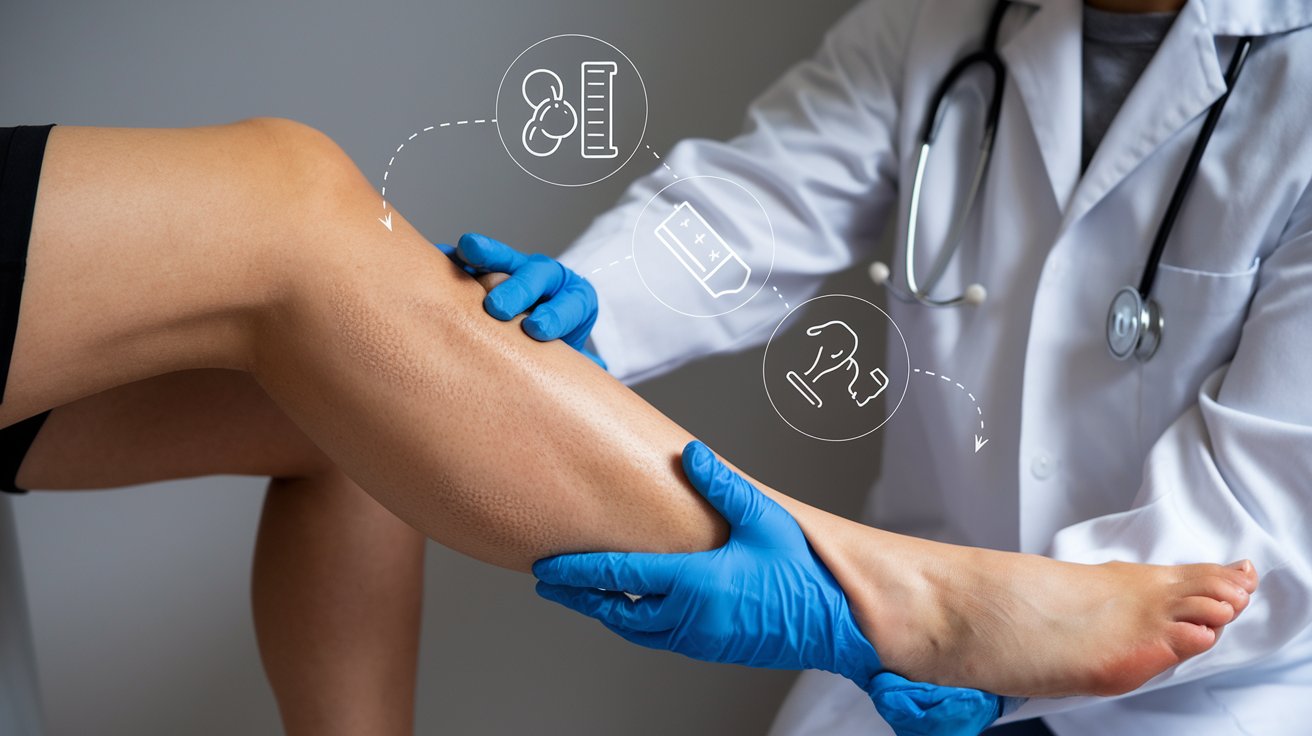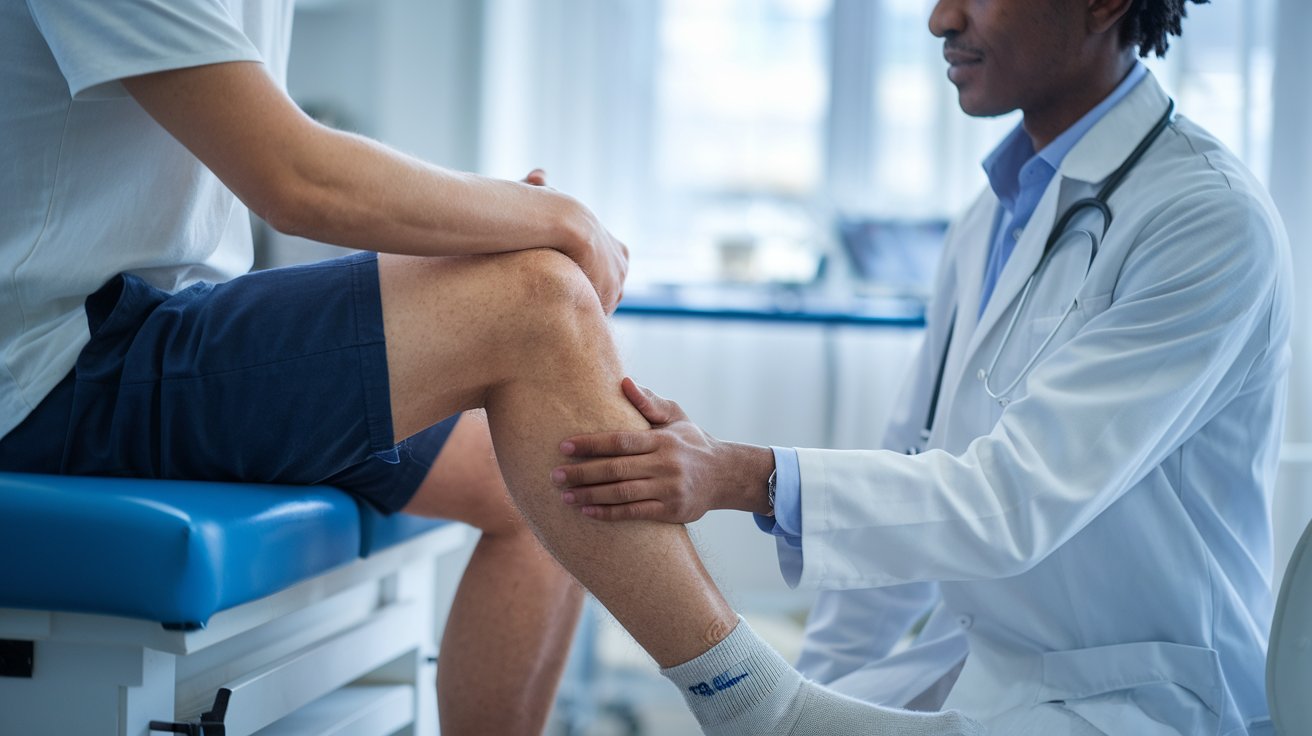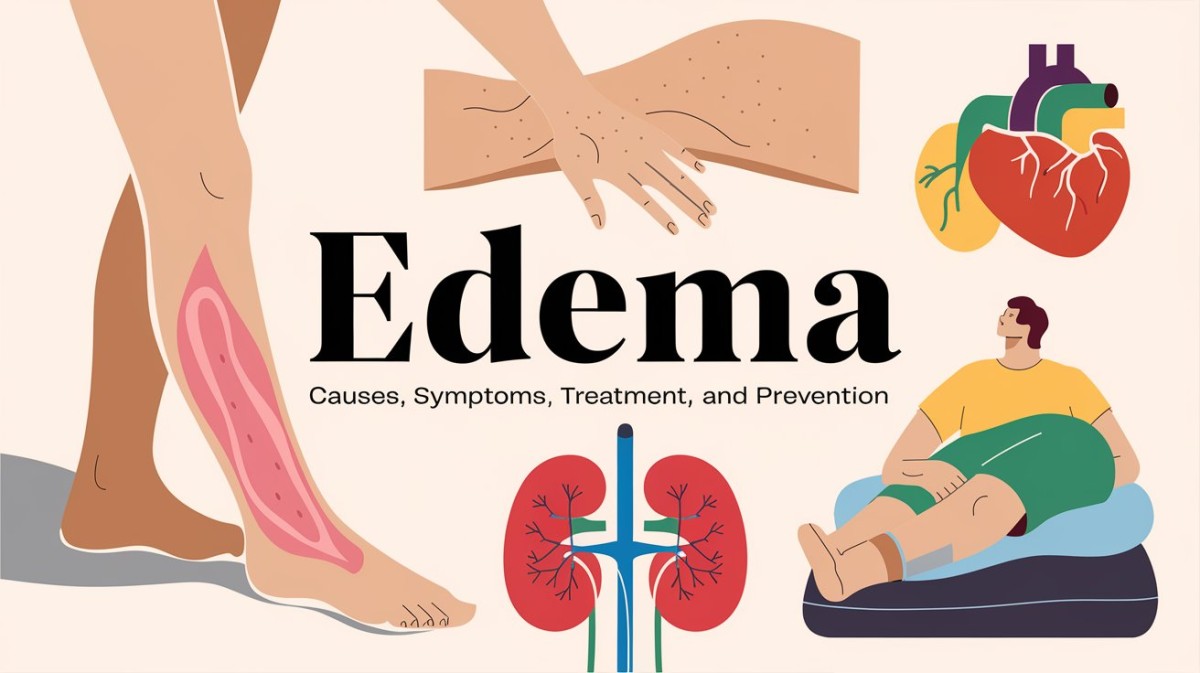Do you know that sometimes you get swelling developing on the legs, ankles, or even your hands when you are busy the whole day? You might be curious about what could be causing this puffiness. This swelling might be an indication of edema, this is a disease that is accompanied by fluid in the body tissues. It is when you know edema; you are in a position to prevent and treat the condition to allow you to lead a normal life. But what is edema that is quite prevalent among the population, what causes it and how can it be cured?
What is Edema?
 Edema refers to the pile-up of fluid in some parts of the body tissue. It accumulates in the microscopic spaces between cells causing the tissues to swell. Fortunately, it affects all parts of the body but is usually first seen in the feet, ankles, or legs. Perthounces occur outside these areas; other forms of edema affect organs, for example, pulmonary in the lungs or cerebral in the brain.
Edema refers to the pile-up of fluid in some parts of the body tissue. It accumulates in the microscopic spaces between cells causing the tissues to swell. Fortunately, it affects all parts of the body but is usually first seen in the feet, ankles, or legs. Perthounces occur outside these areas; other forms of edema affect organs, for example, pulmonary in the lungs or cerebral in the brain.
These symptoms can range from not being detected at all to relatively mild to severe edema which is characterized by pain, difficulty in movement and other related complications which might be an indication of other complications.
Causes of Edema
The cause of edema can be attributable to lifestyle practices as well as serious pathological states. Common causes include:
 1. Prolonged Standing or Sitting
1. Prolonged Standing or Sitting
Sitting or standing for a longer period – be it in the office or at home makes fluids accumulate in the legs, and cause swelling especially towards on the evening. This form of edema is usually brief and is easily relieved once more mobility is regained.
2. Injury or Inflammation
This can be caused by injury, such as a sprained ankle, infection or inflammation, and specific neurological conditions. This localized inflammation is normal since a person’s body has responded to try to fight off the infection.
3. Heart Failure
Congestive heart failure means that the heart is not able to pump proper blood in individuals suffering from it. This inefficiency can lead to a situation where there is a congestive accumulation of blood in the lower annexe of the body leading to edema.
4. Kidney Disease
Among various functions, the kidneys are mainly responsible for the regulation of fluid balance. In kidney disease, the kidneys are not capable of filtering wastes in the blood, including water; therefore the body swells.
5. Liver Disease
Some conditions like cirrhosis of the liver will impair the manufacture of albumin, a protein important for regulating water in the body. When albumin is low, fluid is unable to remain in the blood vessels but leaks into the tissues leading to swelling or edema.
6. Venous Insufficiency
When blood circulation in our legs becomes poor, the veins are not in a position to circulate blood back to the heart, leading to chronic edema.
7. Pregnancy
In most cases during pregnancy, pregnant women develop mild swelling on the calves, feet or hands due to pressure exerted on the blood vessels by the growing uterus.
8. Medications
Some medications such as calcium channel blockers used for hypertension, steroids, NSAIDs, the anti-inflammatory drugs cause fluid accumulation and edema.
Symptoms of Edema
 Edema often presents with noticeable swelling, but other symptoms can include:
Edema often presents with noticeable swelling, but other symptoms can include:
❖ Puffy or swollen skin
❖ Shiny or stretched skin
❖ Pitting oedema when pressure is applied (pitting oedema)
❖ Pain or tautness in the oedematous region
❖ Restricted movements within the region in question
❖ Weight gain through water retention
In severe conditions, depending on the affected structures, the signs include difficulty in breathing if the swelling has occurred in some vital organs such as the lungs.
Diagnosing Edema
To determine whether you have edema and identify its underlying cause, your doctor may conduct several tests:
1. Physical Examination
A doctor will examine the area of the swelling and sometimes he or she will check for pitting, where you press the skin and see whether it will regain its normal shape.
2. Blood Tests
These may assist in determining whether there exist liver, kidney, or heart issues that may lead to edema.
3. Urine Tests
Measurement of urine can demonstrate how efficient the kidneys are, or whether proteinuria is leading to the development of edema.
4. X-rays, Ultrasound, or MRI
These imaging tests can give the physician a better view of lesions, inflammation or any injuries within a particular area.
Treatment Options for Edema
As for the treatment of edema, it is mainly centred on the treatment of the cause and other related manifestations. Common treatment approaches include:
1. Elevation
 Moving the limbs up towards the heart can also help the fluid to be pumped back to the circulation, hence reducing swellings.
Moving the limbs up towards the heart can also help the fluid to be pumped back to the circulation, hence reducing swellings.
2. Compression Garments
The use of compression socks or stockings has some pressure with the objective of avoiding fluids in the legs.
3. Diuretics
Popularly referred to as “water pills,” these drugs assist in flushing out fluids from the body via the kidneys. It is used in patients with heart failure or kidney disease.
4. Reduced Salt Intake
Sodium intake can make your body hold more water than necessary. It is possible to decrease the level of edema if you decrease the amount of salt in your diet if you have hypertension or kidney disorder.
5. Movement and Exercise
Exercise, in general, will enhance blood circulation reducing the chances of fluid build-up in the limbs. Something as simple as taking a break from sitting or standing for long durations can be very helpful for a layman in today’s world.
6. Treating Underlying Conditions
The principle of treatment for edema due to conditions like heart or kidney disease is the management of the primary disease. This might mean using drugs, adjusting people’s diet and several other procedures.
Preventing Edema
 Although some causes of edema, like certain medical conditions, cannot be completely avoided, there are steps you can take to reduce the risk:
Although some causes of edema, like certain medical conditions, cannot be completely avoided, there are steps you can take to reduce the risk:
❖ Stay Active: One must also take regular exercise as this discourages the accumulation of fluids in the tissues hence improving circulation.
❖ Avoid Prolonged Inactivity: If you are required by your workplace to sit or stand for most of your working hours, ensure that you get to take regular intervals and stroll around.
❖ Wear Compression Garments: For those who are at risk of having swollen legs, it is recommended that they wear compression socks or stockings to avoid the accumulation of fluids.
❖ Monitor Salt Intake: It is good to limit the intake of sodium to reduce the chances of holding on to water unnecessarily.
❖ Manage Weight: This way, the pressure on your veins will be reduced and your circulation will improve if you are a few pounds overweight.
When to See a Doctor
 Most of the time, we can control minor swelling on an outpatient basis. However, you should seek medical attention if:
Most of the time, we can control minor swelling on an outpatient basis. However, you should seek medical attention if:
❖ The swelling is sudden and severe
❖ You experience chest pain or difficulty breathing
❖ The swollen area is painful or red
❖ Swelling persists despite home remedies
Patients experiencing these symptoms must seek medical attention for they may be ambiguous signs of other severe diseases.
Conclusion
Edema may be only a mild discomfort and still be indicative of an underlying health problem that requires attention. The present article aims to analyze the causes of edema, the features of its manifestation, and possible treatment modalities for this disease so that the reader can manage the condition efficiently to enhance the quality of the patient’s life. Swelling that is regular or intense requires the attention of a doctor to exclude critical causes and get the correct treatment.
